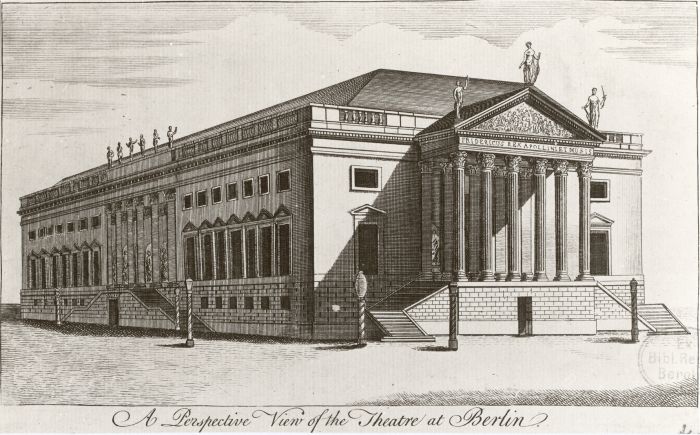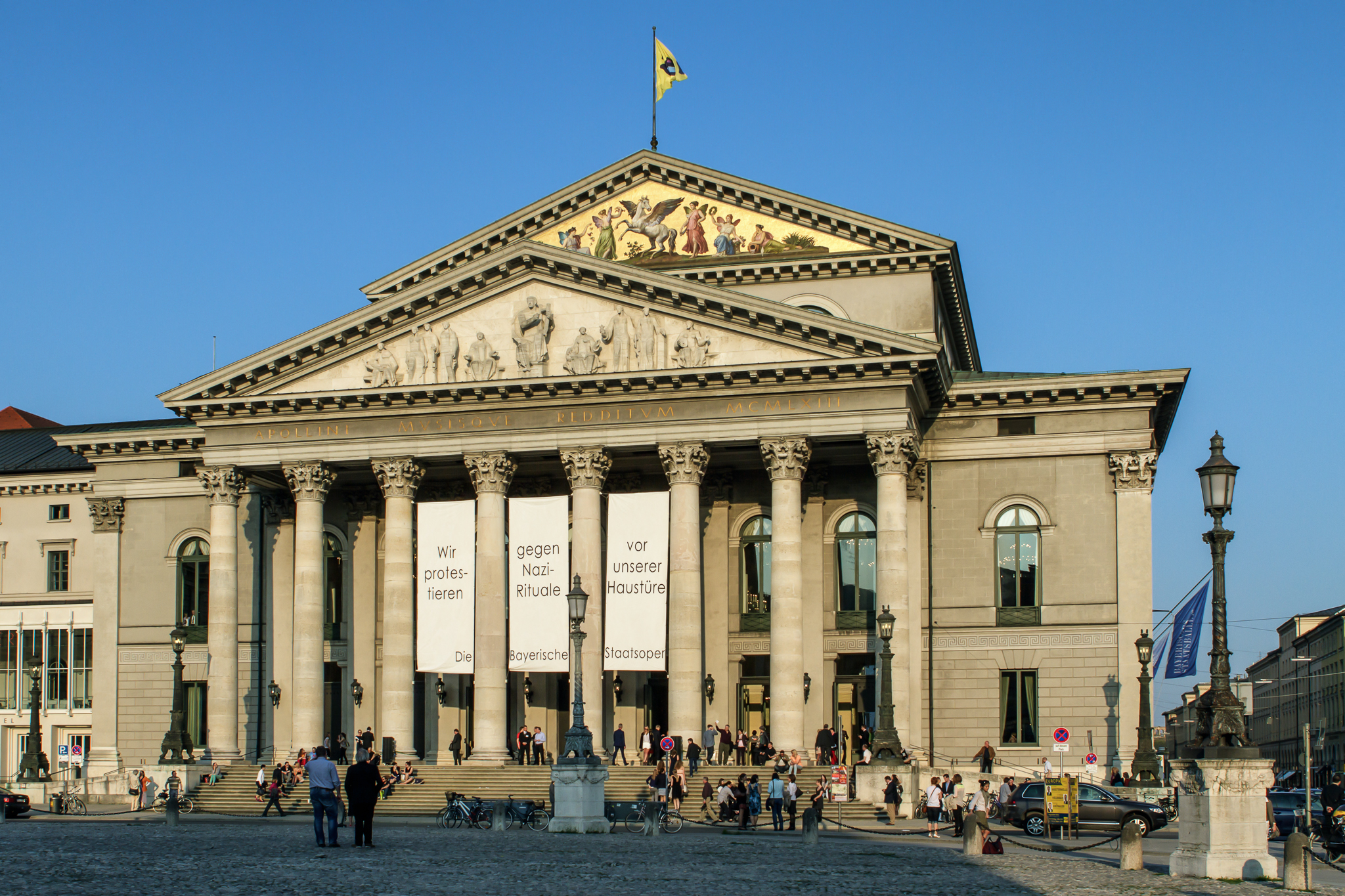|
Hofoper (before 1920), now Vienna State Opera
{{SIA ...
Hofoper is German for a court opera house or company, particularly for imperial, royal, electoral, or princely courts. Many of these have since been renamed ''Staatsoper'' ("State Opera") or ''Städtische Oper'' ("Municipal Opera") as the courts went defunct. ''Hofoper'' may specifically refer to: * Berliner Hofoper (before 1844), now the Berlin State Opera (after 1844) * Hofoper Dresden, now the Semperoper, Dresden * Mannheim Palace, Mannheim * Münchner Hofoper, now the Bavarian State Opera, Munich * Schwetzingen Hofoper, now the Schlosstheater Schwetzingen, Schwetzingen * Wiener Hofoper The Vienna State Opera (, ) is an opera house and opera company based in Vienna, Austria. The 1,709-seat Renaissance Revival venue was the first major building on the Vienna Ring Road. It was built from 1861 to 1869 following plans by August Si ... [...More Info...] [...Related Items...] OR: [Wikipedia] [Google] [Baidu] |
Schlosstheater Schwetzingen
Schlosstheater Schwetzingen (Schwetzingen palace theater) is a court theater in Schwetzingen, Baden-Württemberg, Germany. The historic building, opened in 1753, is part of Schloss Schwetzingen and since 1952 the principal venue of the Schwetzingen Festival. It is also called ''Hoftheater'' (court theater), ''Hofoper'' (court opera), and ''Comoedienhaus'' (comedy house). The frequently applied name ''Rokokotheater'' (Rococo theater) is misleading, because it shows also neoclassical elements, added in 1762. History Karl Theodor, the Pfalzgraf who resided in Mannheim, had the theater built for his summer residence in Schwetzingen in 1752 to the plans of court architect Nicolas de Pigage. It was opened on 15 June 1753, presenting Ignaz Holzbauer's opera ''Il figlio delle selve''. The theater could then be considered a rococo creation, but was expanded with early neoclassical tendencies. While it first had no boxes, it was enlarged in 1762, creating a "box-like" impression. It i ... [...More Info...] [...Related Items...] OR: [Wikipedia] [Google] [Baidu] |
Berlin State Opera
The (), also known as the Berlin State Opera (german: Staatsoper Berlin), is a listed building on Unter den Linden boulevard in the historic center of Berlin, Germany. The opera house was built by order of Prussian king Frederick the Great from 1741 to 1743 according to plans by Georg Wenzeslaus von Knobelsdorff in the Palladian style. Damaged during the Allied bombing in World War II, the former Royal Prussian Opera House was rebuilt from 1951 to 1955 as part of the Forum Fridericianum square. Nicknamed ''Lindenoper'' in Berlin, it is "the first theater anywhere to be, by itself, a prominent, freestanding monumental building in a city." History Names Originally called the ''Königliche Oper'' (Royal Opera) from 1743, it was renamed as the ''Preußische Staatsoper'' (Prussian State Opera) in 1919, then as the ''Deutsche Staatsoper '' in 1955. Until 1990, it housed the state opera of East Germany. Since 1990, it is officially called the ''Staatsoper Unter den Linden'' (State Ope ... [...More Info...] [...Related Items...] OR: [Wikipedia] [Google] [Baidu] |
Court (royal)
A royal court, often called simply a court when the royal context is clear, is an extended royal household in a monarchy, including all those who regularly attend on a monarch, or another central figure. Hence, the word "court" may also be applied to the coterie of a senior member of the nobility. Royal courts may have their seat in a designated place, several specific places, or be a mobile, itinerant court. In the largest courts, the royal households, many thousands of individuals comprised the court. These courtiers included the monarch or noble's camarilla and retinue, household, nobility, clergy, those with court appointments, bodyguards, and may also include emissaries from other kingdoms or visitors to the court. Prince étranger, Foreign princes and foreign nobility in exile may also seek refuge at a court. Near East, Near Eastern and Far East, Far Eastern courts often included the harem and Concubinage, concubines as well as eunuchs who fulfilled a variety of functions. ... [...More Info...] [...Related Items...] OR: [Wikipedia] [Google] [Baidu] |
Semperoper
The Semperoper () is the opera house of the Sächsische Staatsoper Dresden (Saxon State Opera) and the concert hall of the Staatskapelle Dresden (Saxon State Orchestra). It is also home to the Semperoper Ballett. The building is located on the Theaterplatz near the Elbe River in the historic centre of Dresden, Germany. The opera house was originally built by the architect Gottfried Semper in 1841. After a devastating fire in 1869, the opera house was rebuilt, partly again by Semper, and completed in 1878. The opera house has a long history of premieres, including major works by Richard Wagner and Richard Strauss. History The first opera house at the location of today's Semperoper was built by the architect Gottfried Semper. It opened on 13 April 1841 with an opera by Carl Maria von Weber. The building style itself is debated among many, as it has features that appear in three styles: early Renaissance and Baroque, with Corinthian style pillars typical of Greek classical r ... [...More Info...] [...Related Items...] OR: [Wikipedia] [Google] [Baidu] |
Mannheim Palace
Mannheim Palace (german: Mannheimer Schloss) is a large Baroque palace in Mannheim, Baden-Württemberg, Germany. It was originally the main residence of the Prince-electors of the Electorate of the Palatinate of the House of Wittelsbach until 1777. Part of the palace is used today by the University of Mannheim. The castle, which features tapestries, furniture, paintings, porcelain and silverware can be visited on a free-flow basis with audioguides. Origins The city of Mannheim, founded in 1606, was fortified and at the present site of the castle there was a fortress called ''Friedrichsburg'', sometimes serving as alternative residence for the Elector, one of the most important territorial princes of the Holy Roman Empire. The actual palace dates from the 18th century. When Elector Karl III Philip had confessional controversies with the inhabitants of his capital Heidelberg, he decided to make Mannheim the Palatinate's new capital in 1720. Karl Philip decided to construct a ... [...More Info...] [...Related Items...] OR: [Wikipedia] [Google] [Baidu] |
Bavarian State Opera
The Bayerische Staatsoper is a German opera company based in Munich. Its main venue is the Nationaltheater München, and its orchestra the Bayerische Staatsorchester. History The parent ensemble of the company was founded in 1653, under Electress consort Princess Henriette Adelaide of Savoy, when Giovanni Battista Maccioni's ''L'arpa festante'' was performed in the court theatre. In 1753, the Residence Theatre (Cuvilliés Theatre) was opened as a major stage. While opera performances were also held in the Prinzregententheater (completed in 1901), the company's home base is the Nationaltheater München on Max-Joseph-Platz. In 1875, the Munich Opera Festival took place for the first time. Sir Peter Jonas became the general manager in 1993, the first British general manager of any major German-speaking opera house. In 2008, Nikolaus Bachler became Intendant (general manager) of the opera company, and Kirill Petrenko became Generalmusikdirektor (GMD) in 2013. In 2014, the ... [...More Info...] [...Related Items...] OR: [Wikipedia] [Google] [Baidu] |




